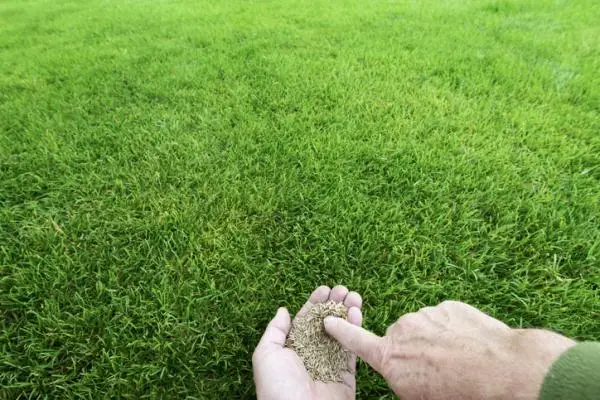Grass is called the group of species of grasses that, when growing, form a dense and dense green cover. They are widely used in ornamental gardening, to give uniformity to large spaces to which other species are also added. Grass is also used in all types of sports and leisure activities, since it is safer to practice them on the green roof than directly on stone, gravel or asphalt.
If you want to learn more about when and how to plant grass , as well as the different types of natural grass that exist, keep reading this article.
Types of Lawn
There are a large number of varieties of grass , but the most commonly used are not that many. Depending on the climate in which they are going to be planted, they are the following:
Warm weather lawns
These grasses withstand higher temperatures and are less demanding when it comes to watering.
- Cynodon dactylon: it is also known by the name of grass , and it is one of the most used types of grass thanks to its ability to resist both heat and droughts as well as footfalls, which is why it is used in parks and soccer fields . It does not tolerate the cold.
- Kikuyu: this species, of tropical origin, is widely used in gardens in the Mediterranean coastal areas, as it is able to cope well with climates with a high concentration of salt. Its blades are wide, and it is also very resistant to footfalls and punishment.
- Zoysia japonica: This fine-bladed grass, which also withstands footfalls, is often used for its low maintenance requirements: it requires little water and tolerates saline irrigations. It is also resistant to many diseases and tolerates shade well, making it one of the most “off-road” species that exist.
Cold weather lawns
- Ray grass: although its optimum temperature is cold, it adapts to almost any climate, making it the most used grass species. It grows quickly, allows it to be cut very low and withstands footfalls, in addition to offering a dense and dense cover.
- Festuca arundinacea: this perennial grass, which resists trampling very well, is a rustic species that requires very little maintenance and is very commonly used on slopes. In addition, it adapts to both hot and cold climates.

When to plant grass
The moment of planting the lawn is a key factor when planting it. The best times are spring and early autumn , as both are growth periods for most species of this type of grass. If you want your lawn to grow fast, plant it in the fall.
How to plant grass
Now that you know when the grass is planted and which are the most used natural types, we recommend that you follow this guide with tips for planting grass at home :
Prepare the ground for planting grass
The first thing you should do is prepare the ground, as is the case with any plant. The lawn needs a land that offers good drainage to avoid puddles: if the soil has too much moisture, your seeds will not even germinate. Before planting, it is also necessary to thoroughly clean the soil of adventitious plants or weeds. Also make sure to add at least 10 cm of topsoil if the terrain does not have them.
Drainage for the lawn
In the case of large areas of lawns, you will also need to prepare a good drainage system, with a level surface or with gentle slopes that remove accumulations of water.
Plant grass seeds
Once everything is ready, prepare your seeds and spread them in handfuls across the surface of the ground, as evenly as possible. Here it is common to use the two-pass method, one horizontally and the other vertically. Once spread, they are buried with a gentle raking. Water after planting and do it again three times a day in short waterings.
How long does the grass take to grow?
Depending on the species and conditions, grass seeds can take anywhere from a day or two to a little over a week to grow, so don’t worry if you don’t see immediate results. If you keep the surface moist and without puddles, your seeds will germinate.

Lawn care
Now that you know how to plant grass, we advise you to take into account these tips on caring for natural grass :
Mowing
The main care is mowing the lawn , which must be done several times a year. The mowing is the one that favors that the grass covers the entire desired surface uniformly, with a higher density. The periodicity of this depends on the species and the local climate. The same happens with the cutting height, in which it is the species that commands.
Lawn watering
Irrigation must be adapted to the type of lawn. Overwatering will damage plants, so it should be up to twice a day for species that need more moisture and in hot months. It should never be watered in the hours of greatest sun and heat, it is better to do it at dawn and dusk.
Compost and aerated
The fertilizer should be done in spring, although in autumn and summer you can apply a fertilizer with a high potassium content that makes the lawn more resistant to very high or very low temperatures. Sometimes the ground must also be aerated, extracting small pieces of the soil and then top it off with a thin layer of sand and mulch.

